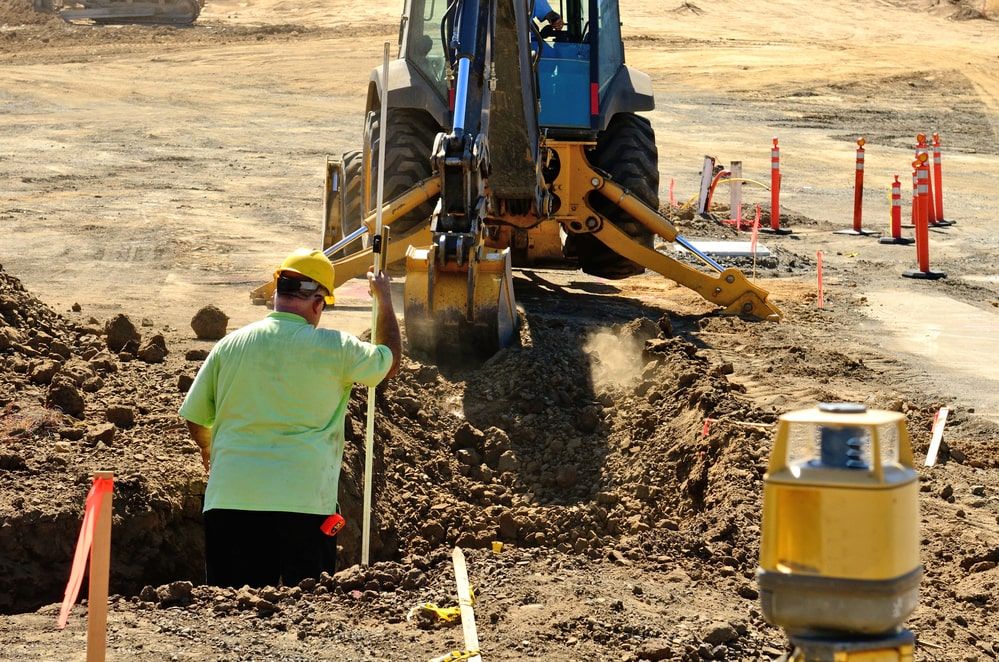Extensive Expedition: The Scientific Research Behind Superior Excavation Practices
The realm of excavation practices is a domain where science links with workmanship to unearth the mysteries hidden underneath the planet's surface area. From ancient hand devices to modern hydraulic excavators, the evolution of excavation methods has been a testimony to human resourcefulness and technical innovations. However, what genuinely sets exceptional excavation methods apart is a deep understanding of geological concepts, combined with the utilization of innovative devices and methodologies. By checking out the science behind these practices, we can reveal the tricks that lie below our feet and appreciate the accuracy and expertise that go right into every dig.
Evolution of Excavation Strategies
Throughout background, the advancement of excavation strategies has played an important role in advancing building practices and historical discoveries. From the rudimentary devices utilized by our forefathers to the advanced machinery utilized in modern times, the development of excavation techniques has actually substantially transformed how we come close to different tasks.
In ancient times, manual work with fundamental tools such as wheelbarrows, pickaxes, and shovels was the key method of excavation. This labor-intensive procedure restricted the depth and extent of excavations, typically causing sluggish development and limited accessibility to certain websites. As civilizations advanced, so did the tools and techniques used for excavation.
The Industrial Revolution marked a transforming factor in excavation practices with the introduction of steam-powered equipment. This technology revolutionized the field, permitting faster and extra extensive excavations. In contemporary times, modern technology plays an essential duty in excavation, with advancements like GPS systems, drones, and 3D scanning improving accuracy and performance in the area. The advancement of excavation techniques remains to form the means we build, explore, and comprehend the world around us.
Duty of Modern Technology in Excavation

The assimilation of cutting-edge modern technology has actually essentially transformed the field of excavation, boosting precision and performance to extraordinary degrees. One of the key technical innovations that has significantly impacted excavation techniques is the use of GPS systems. These systems permit specific mapping of excavation sites, enabling drivers to accurately find underground utilities and frameworks. Additionally, using telematics in excavation devices has actually enabled real-time surveillance of device performance, leading to aggressive maintenance and raised operational productivity.
Moreover, the arrival of 3D modeling and simulation software program has structured the planning process for excavation jobs. Engineers and drivers can now envision the entire excavation process prior to beginning, enhancing and determining possible obstacles workflow. Along with this, the application of drones in excavation tasks has actually facilitated aerial surveys, volumetric measurements, and website examinations with unmatched speed and precision.
Geological Concepts in Excavation
An understanding of geological principles is vital for guaranteeing the structural integrity and stability of excavation websites. Geological aspects play a crucial her comment is here duty in identifying the usefulness and safety of excavation jobs.
In addition, the geological framework of the location, consisting of mistakes, cracks, and rock formations, have to be very carefully examined to identify possible dangers and difficulties. Digging deep into near geological fault or unstable rock developments can result in instability and possible risks. By performing thorough geological surveys and evaluation, engineers and excavators can establish techniques to minimize risks and make certain the effective completion of excavation tasks. Eventually, including geological principles right into excavation practices is critical for accomplishing risk-free, reliable, and sustainable outcomes.

Newest Tools for Excavation
In the realm of excavation methods, contemporary developments in tools have transformed the efficiency and precision of excavation processes. Among the most recent devices making waves in the industry is the usage of drones equipped with innovative imaging technology. These drones can give thorough airborne surveys of excavation sites, providing real-time data on topography and prospective risks. This information aids in far better preparation and decision-making during the excavation process.
One more cutting-edge tool obtaining appeal is the implementation of 3D printing modern technology for producing customized excavation devices. This enables the production of specialized devices that are tailored to the details demands of a project, boosting effectiveness and minimizing downtime.
Additionally, advancements in products scientific research have led to the advancement of stronger and a lot more durable excavation tools. excavating ohio. Tungsten carbide-tipped see this excavator add-ons, as an example, deal superior efficiency in tough ground problems, boosting performance on-site
Scientific research's Impact on Excavation Practices

Additionally, scientific study on dirt mechanics and geotechnical engineering has actually provided important understandings into soil actions, allowing excavation professionals to make enlightened choices concerning excavation techniques and dirt stablizing techniques. In general, science proceeds to drive technology and improvement in excavation practices, making excavation projects much more effective, affordable, and lasting.

Final Thought
Finally, the development of excavation techniques has been considerably influenced by developments in technology and a much deeper understanding of geological concepts. The most recent tools and tools made use of in excavation have boosted performance and precision in the field. The application of clinical understanding has actually dramatically improved excavation practices, bring about more sustainable and effective approaches for excavating various kinds of materials.
In the world of excavation techniques, contemporary developments in tools have actually changed the performance and accuracy of excavation processes. By leveraging scientific principles, the excavation market has been able to considerably improve performance, precision, and security in excavation processes. GPR permits excavation groups to non-invasively scan weblink and map subsurface structures, energies, and prospective risks, enabling them to intend excavation jobs with greater accuracy and minimized danger of crashes.
Furthermore, scientific study on dirt mechanics and geotechnical design has provided beneficial insights into soil behavior, permitting excavation experts to make informed choices concerning excavation methods and dirt stablizing strategies. In general, science proceeds to drive development and renovation in excavation methods, making excavation tasks a lot more efficient, economical, and sustainable.